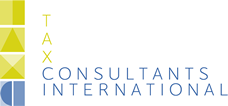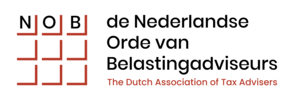As from 1 January 2015, the rules on telecommunications, broadcasting and electronically supplied services (digital services) will change. Per that date the abovementioned services will as a general rule be subject to VAT in the country of residence or establishment of the customer. It does not matter if the customer is a private individual or entrepreneur or whether the customer resides in or outside the EU!
In order to prevent the service provider from having to register in each EU Member State where digital services are supplied, the Mini-One-Stop-Shop (MOSS) scheme will be introduced on 1 January 2015. This scheme allows businesses supplying digital services to private individuals to report and pay the VAT on these services via one EU Member State.
To which services do the new VAT rules apply?
The new rules apply to amongst others:
- electronic services: services supplied through the Internet or a digital network. They are mostly automated services and cannot be supplied without information technology.
- telecommunications services: the transmission, broadcasting or reception of signals, text, images, sounds or information through wires, radio waves, optic or other electromagnetic systems. This also includes the transfer and granting of the right to use capacity for such transmission, broadcasting or reception.
- radio and television broadcasting services: services with an audio and audio-visual content, such as radio or television programs offered by and under the editorial responsibility of media service providers on the basis of a program schedule via communications networks to the general public for the purpose of listening or watching simultaneously.
How to determine the place of supply of digital services?
Under the new regime, the basic principle is that digital services supplied to private individuals are taxed in the country of residence of the individual.
Considering the vary nature of digital services and the way they are supplied it may not always be easy for the service provider to determine the county of residence of the customer.
Depending on the nature of the service the service provider can termine the place of service on the basis of:
- the physical location: this will apply when the service provider supplies the service at a certain specific location such as a WIFI hotspot, pay phone, internet café, restaurant or hotel lobby;
- the place of departure of passenger transport: this will apply when the service provider supplies the service at on board a ship, aircraft or train, in case of passenger transport within the EU.
- the place of installation of the fixed line of a private individual: this will apply when the service provider supplies the service via a fixed line.
- the country code of the SIM card of a private individual: this will apply when the service provider supplies the service via a mobile telephone.
- the place where the decoder or viewing card has been sent to: this will apply if the service requires a decoder or viewing card.
In order to reduce the administrative burden for the service provider, it is allowed to apply the above-mentioned guidelines, without having to request other information from your customer.
The service provider is allowed to deviate from these guidelines, and to determine the place of residence of the customer in a different (more suitable way). For this to be accepted by the tax office, the service provider will need to produce multiple non-contradictory evidence, such as the invoice address, bank details, the internet protocol address (IP address) or other commercial data.
What do the news mean for you and which action is required?
If you sell electronically supplied services, such as online training, music and film downloads, or software the new rules change the country of taxation from where you as supplier are established to where the customer is established.
This means that, rather than applying a single VAT rate in your country of establishment, you will be required to apply the local VAT rate in any of the 28 European countries where your customer is located.
You may opt to register for VAT purposes in the country where your customer resided or you can make use of the Mini-One-Stop-Shop (MOSS) scheme. Under this scheme you are allowed to register in only one EU Member State and account for the VAT due in other countries through this one registration. You will then file your notification with the tax authorities in the EU Member State you are registered and they will process your VAT notification, together with the VAT you paid, to the tax authorities in the relevant Member State.
Both EU-based and non-EU based companies can participate in this scheme (i.e. there are two schemes: the EU scheme and the non-EU scheme).
Once registered, you must file quarterly a digital VAT notification (even if you did not supply any telecommunications, broadcasting or electronic services during that specific period).


.png)

